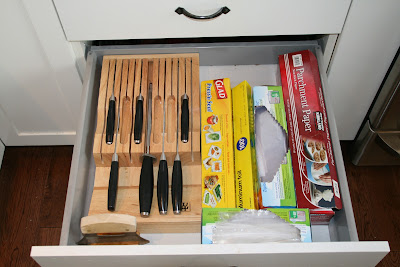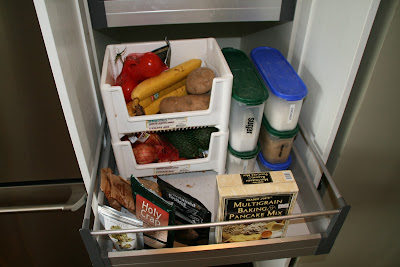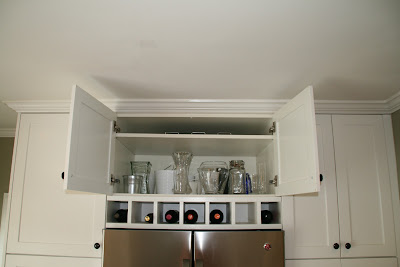Having a garage sale is a great way to kick start a clutter purge. Here are some steps and tips for a successful sale.
- Gather
the stuff
- Use
a staging area (such as guest room, dining room, garage, basement) to gather
the items for sale.
- Your
garage sale inventory should consist of general household items, clothing,
books, kids stuff, hobby supplies, low priced furniture, home decor, garden
equipment, board games, recreational equipment, etc. Separate out belongings that are highly specialized and
unlikely to appeal to the general public.
- Research
- Garage
Sale, Craigslist OR EBAY. If you have any collectables or rare items for sale,
research the value and decide if the garage sale is the best marketplace to
sell these. Craigslist is a good
marketplace for bulky items with value that are best sold locally. Ebay is the best marketplace for rare,
specialized or collectable items that are reasonably easy to ship. The Ebay auction format is likely to
yield the highest possible market value for the rare or specialized item
- Does
your city require a permit? Call your municipality to find out.
- Are
there sign regulations? Check with your municipality.
- Sort
items in staging area, putting similar items together.
- Board
games
- Kitchen
items
- Hobby
supplies
- Garden
equipment
- Camping
equipment
- Clothing
(separate out by size, ie. Girls size 4, Boys size 8, etc. Ladies size 6,
Mens size XL).
- Baby
items
- Housewares
- Décor
- Set
the date
- Saturday
or Sunday are best. Choose one day
only, because all the good stuff is normally sold in the first few hours of day
1 and customers know this.
- Avoid
holiday long weekends.
- Choose
a start time that is consistent with start times with other garage sales in the
area – usually 8am or 9am. Die
hard garage salers plan their route to visit all the sales in the neighbourhood
first thing in the morning. 12noon
start is not recommended for this reason.
- Plan
an end time early in the afternoon, ie. 1 or 2pm
- Have
a plan B date incase you decide to cancel due to weather.
- Exit
strategy
- Some
ideas to accelerate sales towards the end of the day:
a.
Half price items after 11am
b.
$1/bag after 12pm
c.
Free items during pack-up at 1pm
- Call
your favourite charity in advance, and arrange pick-up of all unsold items at
the end of the sale.
- Alternatively,
load up your vehicle with the unsold items and drop it off at your local
charity, thrift store or shelter. Make sure you research in advance what items
each facility accepts and would find useful.
- Pricing
- If
the goal is to get the BEST price for your item, try selling it in a different
marketplace (Craigslist, Ebay, antique consignment, etc). If your goal is to get rid of it, then
sell it in a garage sale.
- What
price should you ask for your items?
Consider what you would pay at a garage sale for this item. The general rule of thumb is 1/3 of
retail (MAX). This doesn’t always
apply however. You may have spent
$20 on a souvenir ball cap from the Grand Canyon, but you’ll probably only get
$1 for it at the garage sale.
- Price
EVERYTHING! Buyers are more apt to
buy if they know the price is in their ballpark. It’s OK to tag an item “Make me an offer”, and bundle all
kitchen gadgets in a bin marked “$1 each”.
- Prepare
to negotiate the price, it’s the name of the game, and it is part of what makes
garage sales fun. Build in a small
buffer to your asking prices, and prepare to give buyers bulk pricing if they
are buying multiple items.
- Know
your pricing and don’t overprice. Garage salers are looking for bargains, and
they know the going prices for things.
Remember, the goal is to get rid of stuff.
- Write
“FIRM” on a price ticket for items if that is your bottom price.
- Give
back
- Consider
donating a percentage (or all?) of the proceeds of the sale to a charity. Advertise this in your online postings
and with a big sign onsite on event day. It’s a great way to give back in your
community or to your favourite cause.
- People
are happy to pay full price if they know some proceeds are going to charity.
- Include
an extra donation jar by the cash table for people to give some extra coins,
and for people that browse but don’t buy.
- FOLLOW
THROUGH – it’s important to make the promised donation shortly after the garage
sale ends, and proceeds are calculated.
- ADVERTISE
The success of your sale rides
almost exclusively on this step. If you don’t have customers, you won’t make
many sales. Invest some time and a little bit of money on the marketing of your
event.
- Craigslist
– post for free on Craigslist and Kijiji.
- Facebook
and Twitter - Social media is another great FREE way to get the word out.
- Your
online listing should include the Date, Start time/End time,
Address/City, and a brief description of items. Photos of the sale items in
set-up mode. Include photos of any
large ticket items (furniture, electronics, home gym equipment, etc).
- Prepare
neighbourhood signs well in advance of event day.
Your
poster signs should include: GARAGE SALE, Date,
Start/end time, address and directional arrow. Do not include any other
information on the poster signs. Send a helper to post them throughout the
neighbourhood EARLY in the morning of event day.
Prepare in advance where all the signs should be placed and
send your helper with a map with sign location instructions.
See my separate post on the
dos and donts of garage sale signage.
I
have some strong feelings on the topic of garage sale signage.
All of the effort you put into the
preparation of the sale can be lost if your signage is poor.
- Check
list before event day
- Newspaper
for wrapping breakables
- Grocery
bags
- Stickers
for pricing (or use painters / low tack tape
- Sharpies/Pens/Markers
- Hangers
& clothes rack / clothes line
- Boxes
for sorting or grouping
- Calculator
- Tape
measure
- Extension
cord to plug in electronics for testing
- Schedule
some helpers
- Float
- ensure you have a selection of small bills and coins to make change
- Garage
sale signs are prepared and ready to be installed around the neighbourhood.
- Setting
up on event day
- Get
everything sorted, prepped and priced prior to event day. Lay everything out for easy set-up the
morning of your sale.
- Set-up
in your garage, car port, yard and/or driveway. Make sure people can see the
sale from the road. If they can’t,
place a few large items visible from the road. Add balloons and/or large colourful signage to mark the
spot.
- Remove
or cover non-sale items in the sale area.
- Use
fold-up tables or plywood on sawhorse stands for display. Try to display as
many of the items as possible, customers won’t always spend the time to dig to
the bottom of boxes to find out what you are selling.
- Hang
clothes as much as possible. Use a
rope strung between trees, or portable clothes rack.
- Display
books with spine out/up.
- Label
items that are unclear ie. King sized sheet set, accessories for certain brand
of electronic device.
- Make
it fun
- Music
- pick a selection that is likely
to appeal to the general public, and don’t play it too loud.
- Theme
– consider having all the merchants (all family members, or point person for
each area if having a multi-family sale) dress in a theme costume, so customers
know who to pay or ask questions to.
a.
Hawaiian grass skirt/Hawaiian shirt
b.
Crazy hats
- Concession
– such as kids selling lemonade & cookies and/or free ice water and coffee.
- Free
stuff – put your broken, unmatched, incomplete items in a FREE box. Such as single earring, chipped mug,
puzzle with missing pieces, etc. If someone can use these items for crafting or
repurposing, it’s better to give them for free than send them to the landfill.
- Be
safe
- Lock
the doors to your house during the sale.
- Don’t
let anyone in to try on clothes or use the washroom inside.
- Place
valueable items close to the house or cash desk to ensure supervison.
- Don’t
take personal cheques
- Ensure
cash is kept safe – use a fanny pack or apron with pockets. Don’t leave cash box unattended
- At the
end
- Pack
up and dispose (donate?) unsold items.
- Take
down neighbourhood signs
Brought to you by:
Heather Fulcher
Professional Organizer for Hire
Vancouver, BC, Canada
heatherfulcher@gmail.com
604-618-4829




















































